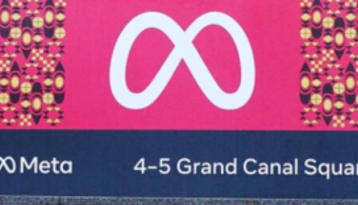COVID-19 • Members
BDO - Temporary COVID-19 Wage Subsidy Scheme

The Temporary Wage Subsidy Scheme is a welcome introduction by Government and represents a significant improvement on the previous COVID-19 Refund Scheme. It will help to maintain incomes for employees at a level which is closer to their previous net earnings.
Unlike the previous scheme, employers, who are in a position to do so, will be permitted to top up the subsidy payment resulting in many employees continuing to receive the same, or close to, previous average weekly take home pay.
Summary of the Scheme
The new scheme will be operated in two phases.
Phase 1 is a transitional phase during which employers will be refunded up to a maximum of €410 for each qualifying employee from 26 March 2020.
However, it is important to note that, where the €410 Revenue payment in Phase I exceeds the maximum subsidy amount due in respect of that employee using the Phase II metrics (e.g. because it exceeds 70% the average net weekly pay for that employee), the excess is refundable by the employer to Revenue.
It is anticipated that this clawback will be offset against subsequent refunds due to the employer.
Phase 2 will take effect from 20 April 2020 and the refund will be calculated as follows:
- Capped at the level of 70% of previous average weekly take home pay, to a maximum of €410 per week
- Capped at €350 for employees where the average net weekly pay is greater than €586 but less than €960
- No subsidy will be paid where net take home pay exceeds €960 per week
Revenue have indicate that “Average Net Weekly Pay” should be calculated as follows:
- Take the employee’s Gross pay for every pay period in January and February 2020
- Subtract the Income Tax Paid, USC Paid and Employee PRSI Paid
- Total this figure for each pay date in January and February 2020 and divide this by the number of insurable weeks (capped at 9) for the period
- This gives you the employee’s average pay that is to be used for the subsidy amount
The new scheme will be operated through employers’ payrolls (similar to the previous COVID-19 Refund Scheme).
Revenue anticipate that reimbursement will be, in general, made to the employer’s bank account within two working days of receipt of the employer’s payroll submission.
Unlike the previous scheme, employers will be allowed to top up this payment. However, the total net payment received should not exceed the employee’s previous average weekly take home pay. If the employer makes an additional payment greater than the 30% difference allowed by the scheme (i.e. the employee receives more than the average net weekly pay) then the subsidy value refundable to the employer will be reduced by this excess amount when the refund reconciliation is being performed.
The net effect of the new scheme is that eligible employees, including temporarily laid off employees (but retained on the payroll), will be initially able to receive the equivalent of their previous average net pay by way of a government subsidy up to a maximum of €410 per week.
Neither PAYE nor USC will be applied to the subsidy payment through the payroll process. However any employer top-up payments should be subject to both PAYE and USC.
Employee PRSI will not apply to the subsidy or any top up payment by the employer.
Employers PRSI will not apply to the subsidy and will be reduced from 10.95% to 0.5% on the top up payment.
While the subsidy payment will not be subject to PAYE, USC or PRSI (for both employer and employee), it will remain taxable in the hands of the employee. Revenue have stated that any taxes due, that are not covered by unutilised credits in the year, will be collected by reducing the employee’s tax credits for a future year or years in order to minimise hardship.
Employers availing of the Scheme can suspend the operation of BIK for eligible employees for the period that the employee is on the scheme. For employees covered by this scheme, BIK or notional pay does not need to be included in Gross Pay. However the notional pay will be liable to income tax and USC on review at the end of the year. We understand these taxes will be collected directly from the employee by coding the liability into future year(s) tax credits.
Qualifying Conditions
To qualify for the scheme, employers must:
- be experiencing significant negative economic disruption due to Covid-19
- be able to demonstrate, to the satisfaction of Revenue, a minimum of a 25% decline in turnover or in customer orders received in Q2 2020
- be unable to pay normal wages and normal outgoings fully
- retain their employees on the payroll
- have the firm intention of continuing to employ their employees, and making best efforts to pay the employee some of their earnings.
The Scheme is confined to employees who were on the employer’s payroll as at 29 February 2020, and for whom a payroll submission has already been made to Revenue in the period from 1 February 2020 to 15 March 2020.
Employer Eligibility and Supporting Proofs
The scheme is available to employers across all sectors (excluding Public Service and Non-Commercial Semi-State Sector). To qualify for the scheme employers must be experiencing significant negative economic disruption due to COVID-19.
Revenue expect employers availing of the Scheme to make best efforts to maintain the employee’s net income as close as possible to normal net income for the duration of the Scheme period.
Employer eligibility will be on a self-assessment basis but with a requirement to make a declaration when applying for the Scheme.
The employer declaration is a statement to the effect that based on reasonable projections, there will be, as a result of COVID-19, a decline of at least 25% in the future turnover of, or customer orders for, the business for the duration of the pandemic and that as a result the employer cannot pay normal wages and outgoings fully but nonetheless wants to retain its employees on the payroll.
It should be noted that, in Revenue’s opinion, the declaration by the employer is not a declaration of insolvency.
In relation to the ‘inability to pay normal wages’, Revenue expect an employer with ‘strong cash reserves’ to pay a significant proportion of the employees’ wages over the period of the Scheme. While there is limited guidance on this point, it is helpful that Revenue do restate their expectation that employers will make best efforts to maintain the employees’ normal net income position, when addressing the point on cash reserves. Although not certain, this would indicate that
On this basis, it seems reasonable that employers with ‘strong cash reserves’ who top-up employees to their average normal net weekly wage would meet the expectation of paying a ‘significant proportion’.
Revenue have stated that key indicators that an employer is experiencing significant negative economic disruption would be indicators such as a decrease or likely decrease in employer’s turnover by 25% in Q2 2020.
This reduction is to be determined by the employer on a self-assessment basis and there is no requirement to make any upfront submissions to Revenue. Revenue have indicated that this determination may be based on:
- Decline in orders in March 2020 compared to February 2020;
- Likely turnover of Q2 2020 compared to Q1 2020;
- Likely turnover of Q2 2020 compared to Q2 2019; and
- Any other basis that is reasonable.
Revenue have stated that there will be a risk focused follow up verification involving an examination of relevant business records where that is considered necessary.
Source: https://www.bdo.ie/en-gb/news/2020/temporary-covid-19-wage-subsidy-scheme


